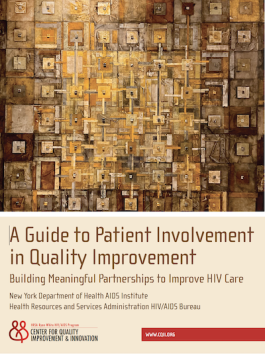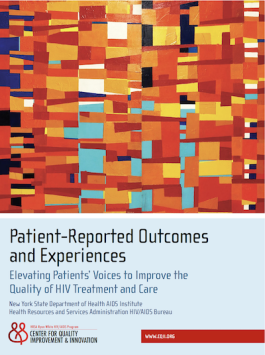
Involvement of people with lived experience is a principle and reality in how the Ryan White HIV/AIDS Program (RWHAP) carries out its mission of delivering HIV care to underserved individuals. It's in the legislative language written in 1990 for the then-titled Ryan White CARE Act.
Roles are varied. Planning body members and leaders. Work on consumer advisory boards that provide input to clinic operations. Serving as staff, like peer educators. In addition, there is yet another role, which is the focus of this blog: participation in quality improvement work to enhance health outcomes of people with HIV.
Involvement of people with lived experience in quality improvement is but one aspect of the technical assistance on clinical quality management (CQM) that has been underway since the 1990s, facilitated in large part by the HRSA-funded National Quality Center (NQC) and (since 2004) the Center for Quality Improvement and Innovation (CQII). CQM technical support has expanded over the years in response to the requirement in the 2000 reauthorization of the RWHAP for funded agencies to establish CQM programming.

Engaging Patients in Quality Improvement
The latest of CQII's consumer-focused quality improvement tools is A Guide to Patient Involvement in Quality Improvement: Building Meaningful Partnerships to Improve HIV Care.
Released January 2024, this document focuses on best practices, necessary skills and strategies for initiating and sustaining patient involvement in QI across a spectrum of engagement activities. Sections cover: Getting Ready: Why Patient Involvement Matters; Patient Involvement Spectrum; and Key Elements of Effective Patient Involvement.

Patients and Patient-Reported Performance Measures
CQII also released The Patient Reported Outcomes and Experiences Guide in January 2024. This tool explains how to elevate patient voices and use and interpret patient-reported performance indicators called PROMS and PREMS.
These indicators were developed by CQII and pilot sites and serve to assess the quality of healthcare, including HIV treatment, and the health care experience based on individual feedback from patients.
Involvement Integrated Across CQII
CQII has also integrated involvement of people with lived experience in quality improvement throughout other technical offerings. Examples include:
CQII Training for Consumers on Quality Plus (advanced training to further build the skills of people with lived experience to participate in quality improvement activities).
Learning collaboratives, whereby agencies learn and work together on CQM topics (e.g., end+disparities ECHO Collaborative).
The 2006 document, A Guide to Consumer Involvement, Improving the Quality of Ambulatory HIV Programs, which focuses on ways an organization can involve people with lived experience in quality improvement, covering: representation on the Board of Directors; establishment of an HIV-specific Consumer Advisory Board (CAB); and consumer representation on an existing CAB.
Involvement in CQII webinar trainings.
Learn more about CQII technical support or contact Daniela Popa.

